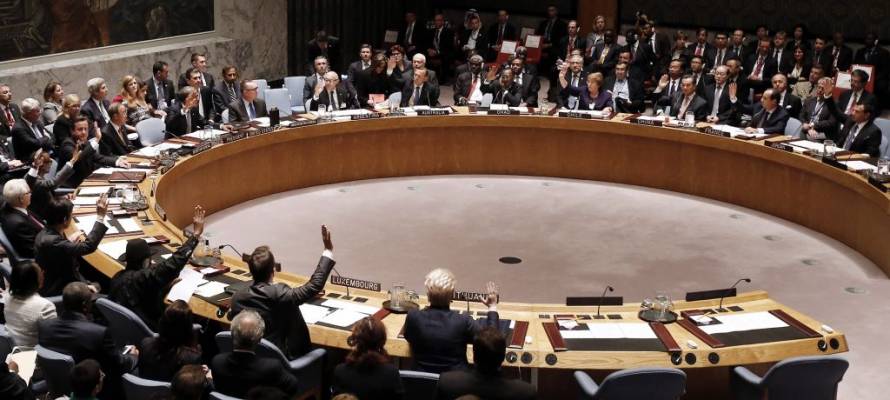
Israeli forces training in the south ahead of the Six Day War. (AP)
Shortly after Israel’s stunning Six Day War victory, UN Resolution 242 was unanimously adopted as the basis for a Middle East peace treaty based on land for peace. Over the years, it seems that some of its recommendations have been deliberately misinterpreted to suit an anti-Israel political agenda.
On November 22, 1967 – close to six months after the 1967 Six Day War between Israel and the surrounding Arab countries – the United Nations adopted Resolution 242, which became the framework for future peace negotiations based on the concept that Israel would exchange land for peace.
Prior to the war, Egypt, the largest and most powerful Arab state at the time, amassed troops along its border and imposed a naval blockade of Israel’s southern port as an act of war. The Arab world was determined to destroy the Jewish state.
On March 8, 1965, for example, Gamal Abdel Nasser, then President of Egypt, vowed: “We shall not enter Palestine with its soil covered in sand. We shall enter it with its soil saturated in blood.”
In fact, these threats against Israel’s existence began immediately after the establishment of the Jewish state, and the ongoing terror attacks against Jewish communities had been taking place for decades, even when the Land of Israel was still part of the British Mandate.
Israel Faces Existential Threat
On June 6, 1967, Israel, under threat of annihilation, launched a successful pre-emptive strike on the Egyptian army and air force. Iraq and Syria joined in the war against Israel; the IDF destroyed the Syrian air force, which attacked first. On the same day, Jordan, encouraged by false reports that the Egyptians were achieving their goal, joined in the fighting, despite Israel’s pledge that it would not attack the Hashemite Kingdom if it stayed out of the war.
Within six days, Israel captured the Sinai Peninsula from Egypt and the Golan Heights from Syria as well as liberating eastern Jerusalem – Judaism’s holiest place – and the biblical lands of Judea and Samaria that were occupied by Jordan since the 1948 War of Independence.
Resolution 242, as explained by CAMERA (Committee for Accuracy in Middle East Reporting in America], called for the “withdrawal of Israeli armed forces from territories occupied in the recent conflict,” without specifying the exact borders or how much territory would be allocated to the Arab countries.
The United States UN representative, Arthur Goldberg, and the British representative, Lord Carradon (Hugh Foot), played instrumental roles in the Resolution’s unanimous passage.
According to the resolution, the agreement would include “termination of all claims or states of belligerency and respect for and acknowledgement of the sovereignty, territorial integrity and political independence of every state in the area and their right to live in peace within secure and recognized boundaries free from threats or acts of force.”
Lack of Clarity in Translation
Also included in the resolution was the need for “guaranteeing freedom of navigation through international waterways in the area and for achieving a just settlement of the refugee problem.”

Then-Egptian President Gamal Abel Nasser vowed to destroy the Jewish state. (AP)
As CAMERA explains, “though the resolution was drafted in English, it was the French translation that Arab states and supporters of full Israeli withdrawal from the territories constantly cited as the proper meaning and only interpretation of UNSC 242. The reason was simple: in French, the key phrase, ‘withdrawal of Israeli armed forces from territories occupied in the recent conflict,’ is translated as ‘retrait des forces arrives Isreliennes des territories occupes lores due recent conflit.’ The English version intentionally omits the definite article ‘the’ before the word ‘territories,’ leaving imprecise the amount or whereabouts of territory from which Israel might be expected to withdraw. By contrast, the French text, because of the requirement in the French language to have an article prior to a noun, necessitated the phrase ‘de territories,’ specifying “the” territories, which was often presented by supporters for full or total Israeli withdrawal as ‘the territories,’ or, even more inaccurately, ‘from all the territories.’”
The resolution also requests that the UN secretary-general designate a Special Representative in the Middle East to establish and maintain contacts with the parties involved, “in order to promote agreement and assist efforts to achieve a peaceful and accepted settlement,” and that the secretary-general report to the Security Council on any progress.
Sadly, despite the formal peace treaties that Israel signed with Egypt and Jordan respectively, the prospects for a lasting peace in the Middle East are currently bleak, given the rise of Islamic terror in the region and incitement preached by the Palestinian Authority.
By: United with Israel Staff
(With files from CAMERA)
